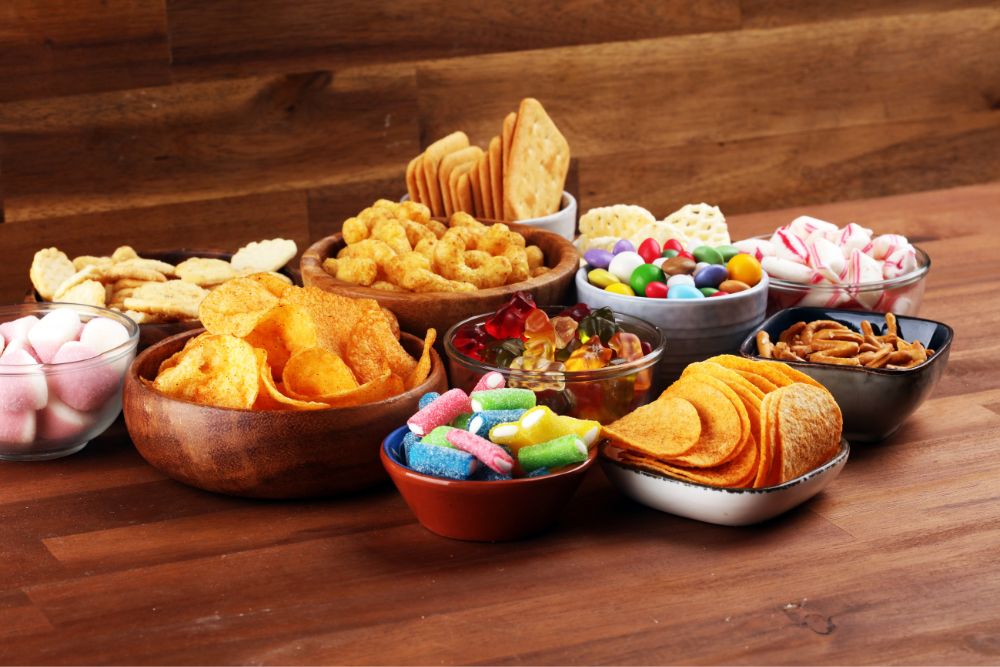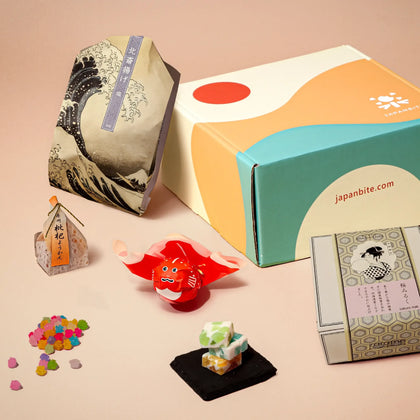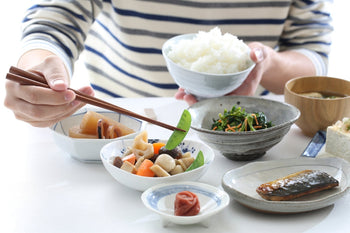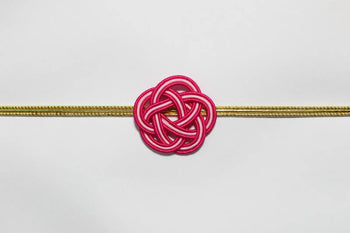

Japanese cuisine is well known for the wide variety of specialties it offers, and treats are not an exception: follow us through this article to see how some of the treats you enjoy daily in your home, have encountered the Japanese culture, giving birth to unique products!
Sweets in Japanese
To refer to "sweets" in Japanese, you would say "菓子" (かし, kashi) in Japanese.
• "菓 (か, ka)" refers to "fruit"
• "子 (し, shi)" refers to "child" or, in general, something small
The literal meaning of "菓子" is, therefore, "a small bite of fruit" because traditionally,
everything sweet that was eaten outside of meals was considered a "sweet", including fruits. You can also find the form "お菓子" (おかし, okashi), where "o" is an honorific prefix that shows respect to the food and the interlocutor we are talking with. In the case of Western sweets, you can also use the word "スイーツ" (suītsu), a borrowed term from English.
The adjective "sweet," on the other hand, can be translated to "甘い" (あまい, Amai). While Japan is famous for its traditional pastries known as wagashi, it is not the only category of sweets this country can offer: let's take a look at some of the most appreciated Japanese sweets, such as traditional candies, and products inspired by Western culture. We also suggest you read the article Learn more about Japanese candy and sweets for more detailed information!
Sugar in Japanese
"Sugar" can be translated as "砂糖" (さとう, satou) in Japanese.
• "砂 (さ, sa)" refers to "sand" or other fine grains
• "糖 (とう, tou)" refers to a sweet carbohydrate that dissolves in water
In other words, "砂糖" refers to something sweet as smooth as sand.
Granulated sugar is common worldwide, including in Japan; an example is caster white sugar, often used in Japan because it goes well with the soy sauce used in making traditional food. In this country, sugar is often used as a seasoning, and since there are many types, Japanese people choose the best type that fits the dish they are cooking.
For example, "sanontou" is a yellow-brown sugar with a strong sweetness, but it is easy to use in stews because it has a rich flavor. "White zara sugar" is a high-purity sugar with large crystals, rarely used at home but favored while making fruit, wine, jelly, and cotton candy. These were just some of the ways Japanese people use sugar as a sweetener and as a seasoning in many dishes.
Chocolate in Japanese
To refer to "chocolate", you would use the borrowed term "チョコレート" (chokoreto).
For Japanese people who love events, when it comes to chocolate, they immediately think of Valentine's Day. Unlike in Europe and the United States, on Valentine's Day, women give gifts to men but not only: traditionally, there was an implicit "obligation chocolate" system in which female employees had to give chocolates to male employees in their companies, but recently this has been abolished from a compliance perspective. Instead, there is a growing culture of giving chocolates to friends, family, and people of the same sex, known as "friend chocolates". During January and the first half of February, famous stores, long-established confectionery shops, and non-chocolate food manufacturers engage in Valentine's Day shopping campaigns. Even at department stores and train stations, "special venues" are set up, and an incredible variety of chocolate types are sold. The most famous Japanese chocolate manufacturers are Meiji and Lotte, but not only: Nowadays, you can find many snacks, ice creams, and even Japanese traditional wagashi containing chocolate in every supermarket. Recently, innovative sweets mixing chocolate with the Japanese tradition are getting popular, including chocolates with wasabi in them or with Japanese sake instead of whiskey.

Candy in Japanese
Candies are usually called "飴" (あめ, ame) in Japanese. This kanji is derived from an ancient Chinese kanji, which used to mean "hung", or "steaming food".
Traditionally, it used to go hand in hand with the concept of "taste", or "sweetness," so ancient Japanese people considered any sweet, steamed food a "candy". You can also find the borrowed term "キャンディ" (kyandee), which is particularly used to refer to Western candies.
Since candies have always been part of the Japanese culinary culture, nowadays, we can appreciate many types of them, from traditional bites to Western candies. Their colorful appearance is loved by people of all ages, from children to elders. In addition, they are not only eaten as sweets, but for health purposes, too: in supermarkets and pharmacies, you can find many types of "throat candies", recommended for throat pain. Speaking of candies that have existed for a long time, candy apples (apples and other fruits coated with melted sugar) are always sold at festival stalls, together with "mizuame", which means "water candy". As the name suggests, mizuame is characterized by its transparent and liquid texture; it is used in cooking so that you can buy it at regular stores, but you can also find it at food stalls at festivals: it is sold inserted into disposable chopsticks and cooled so that you can eat it just like a lollipop.
And, as typical for Japanese people's delicate and precise techniques, there are also candies sold for aesthetical purposes: it is called amezaiku, and involves creating animals and objects using melted sugar and turning them into candies. You can see beautiful amezaiku works in many souvenir shops; one of the most famous types of this candy craft is "Kintaro candy", which consists of a sweet stick that, no matter where you cut it, will always show the same image: you can see people cutting this candy as a performance at shops in various tourist areas!
Candy apples

Cookie in Japanese
To refer to cookies, you would use the borrowed term "クッキー" (kukkee), which derives from the Dutch word "kuku," meaning "small sweet." Japanese people place a high value on politeness and respect, and cookies, which have a long shelf life and have an elegant appearance, are the perfect idea for a gift! Of course, some cookies can be easily purchased at convenience stores and supermarkets, but cookies that are given as gifts are characterized by very elaborate confections and are usually sold at high-end stores. Many manufacturers collaborate with anime and video games: not only are the packaging carefully designed, but the cookies themselves are shaped like the anime's (or video game's) characters, making them a unique souvenir from Japan. Another cookie manufacturer that Japanese people love is "Yoku Moku": their cookies are characterized by a cigar-like shape and a delicious butter flavor. Nowadays, they have become well-known as souvenirs, even among foreign people. In conclusion, nowadays, you can find cookies not only in Western-taste confectionery stores but also in local supermarkets and stores!
Other sweets in Japanese
Let's now take a look at some traditional Japanese sweets influenced by the Western culture: if you are interested in discovering more about them, we recommend the article Japanese Sweets: A guide to the different occasions.
• "たい焼き” (たいやき, taiyaki)
• “たい (tai)” means “sea beam”
• "焼き (やき, yaki)” means “baked”
It is a fish-shaped treat with a crispy sponge cake with a sweet filling inside. While the traditional filling is made from sweet azuki bean paste today you can find flavors like custard cream, chocolate, and even pizza!
“どら焼き” (どらやき, dorayaki)
• "どら (Dora)" means "gong", because these treats have a round shape
• "焼き (やき, yaki)” means “baked”
It is a delicious sweet that combines fluffy pancakes with a sweet filling, which can again have a Japanese flavor like red bean paste, green tea, and chocolate or strawberry jam.

Snacks in Japanese
To refer to snacks in Japan, you would use the borrowed word "スナック" (sunakku).
In Japan, this term usually refers to something from the Western world, is fried in oil, and can be eaten casually, such as potato chips; Japanese treats are not considered snacks! There is a huge variety of snacks available in Japan, from standard potato chips to many souvenir items, such as "Kaki No Tane", inspired by traditional rice crackers. If you are a fan of Japanese cuisine, you can tell that Japanese people are particular about not only the taste but also the "texture" of their food: this applies to their snacks as well, and it is why products such as "Jagariko", a potato-based snack whose main purpose is to enjoy its crunchiness, are that popular.
Salt in Japanese
"Salt" is written as "塩" (しお, shio).
This term derives from the word "潮" (うしお, ushio), which is referred to sea water. Although salt consumption in Japan is high, most of it is imported. However, in Japanese cuisine and fish dishes, even a sprinkle of salt is considered an essential seasoning, so much so that skilled artisans train themselves on how to sprinkle salt the best to bring out the flavor of the ingredients. Japanese food is often thought to be bland and health-conscious, but it is actually high in salt: the reason for this is that the side dishes are heavily seasoned to go well with rice, the staple food par excellence. Typical salty dishes include salted plums, tsukudani (seaweed simmered in soy sauce), and pickles, which all are said to in fact, contain too much salt if eaten in excess! Salt also has a preservative effect, which is believed to have the effect of purifying uncleanness and bad fortune. In the traditional sumo competition, the wrestlers sprinkle salt before fighting to purify the sacred ring. This purifying salt is also used after attending funerals.
Potato chips in Japanese
"Potato chips" can be directly translated to the borrowed word "ポテトチップス" (poteto chippusu).
Although potato chips originated in the United States, many Japanese manufacturers sell them nowadays, and new products are released every month. When you think of chips in Japan, you probably think of the famous brand Calbee. Their products are the most popular among chip manufacturers and are appreciated mainly for their many flavors. Japanese people are also very particular about the texture of their potato chips, so the shape of their chips is an important aspect, too. In fact, Japanese chips come in many variations, such as thinly or thickly sliced, round, square-shaped, but also stick-shaped and even jagged. In addition to Japanese-style seasoning, you can enjoy a wide variety of flavors and textures, including adding foreign spices. "Local" potato chips, flavored with ingredients that recall the local cuisine of a particular region, are a popular souvenir idea, too!
Cracker in Japanese
Also, for the term "cracker", you would use a borrowed word and call it "クラッカー" (kurakkā).
"Kurakkā" is a general term in Japan that refers to biscuits that are not as sweet as cookies. They can be eaten with dips and toppings, just like in Europe and America, but since this habit was imported relatively recently, there is still an image of crackers being served at parties and small gatherings. Although crackers are still perceived as a fancy snack, they are getting increasingly popular among Japanese people. The most famous cracker type is called "Nabisco Ritz", from the confectionery manufacturer Nabisco. It is a popular standard product, often stuffed with cream or chocolate, too.
Rice cracker in Japanese
Rice crackers are called "煎餅" (せんべい, senbei) in Japanese.
• "煎 (せん, sen)" means "heating to evaporate the moisture"
• "餅 (べい, bei)" refers to mochi, an ingredient made by pounding a particular type of rice in a mortar. In other words, "senbei" means "heating mochi", and derives from the habit of eating heated mochi. Japanese rice crackers are traditional snacks made from pounded rice and toasted over charcoal. Senbei's became popular over a thousand year ago, in the Heian period (794-1185). Today, there are hundreds of rice crackers, but we can distinguish two main groups: "Kanto senbei" are usually made with non-glutinous rice, and boast satisfying crunch and bolder flavors like soy sauce and sesame. In contrast, "Kansai senbei", crafted with glutinous rice, have a lighter texture and subtler taste.

Other snacks in Japanese
Speaking of snacks that have existed in Japan since ancient times, there are the so-called "駄菓子" (だがし, dagashi).
• "駄 (だ, da)" is an ideogram that can be associated with something small or boring
• "菓 (か, ka)" refers to "fruit"
• "子 (し, shi)" refers to "child", or in general something small
"駄" is an ideogram that can be associated with something inferior or dull, and in this case, it refers to a small, simple treat. As explained before, "菓子" was anciently referred to any treat that is eaten outside of meals, so in this case, as the name suggests, dagashi are simple snacks that can be bought at a meager price; this is a remnant of when Japan was poor and manufacturers designed something that even children could easily buy.
Dagashi have hundreds of types and can be purchased individually; this particularity makes dagashi shops still very popular among children and tourists. In areas such as Ameyoko in Tokyo, you can find many large stores that we strongly recommend you visit! Popular items include "Umaibō", a cylindric, flavored snack, and "Baby Star Ramen", made from dried noodles.
Desserts in Japanese
Desserts are called "デザート" (dezāto), a borrowed word from English.
"Dezāto" is a general term that refers to all kinds of sweet foods, including snacks, confectionery, ice cream, and so on. In fact, rather than what kind of thing can or cannot be called a dessert, the choice of using this term depends on when something is eaten:"dezāto" as Japanese people commonly call it, refers to sweet foods served after a meal or as a reward for oneself.
Ice cream in Japanese
To refer to "ice cream", you would use the borrowed term "アイスクリーム" (aisu kurīmu), or the abbreviated form "アイス" (aisu).
In Japan, ice cream is often eaten casually as a break or as a dessert after a meal, and there are many options ranging from inexpensive to high-end at general supermarkets, convenience stores, and specialty stores. One of the most entertaining ice cream types is the "Home Run Bar", which has a hit-or-miss game: if you find an ice cream stick with the word "hit" on it, you can go to the store where you bought it and get another one for free!
There are also many collaboration products with confectionery manufacturers, and some of them are surprising, like the many famous cookies that come in an ice cream form! This is because, while ice cream is often thought of as being popular in the summer, Japanese people enjoy ice cream all year round: manufacturers change their products to make it easier to eat depending on the season so that it can be the best dessert to eat in a warm, cozy room in the winter.
An example is "Yukimi Daifuku", which is well-known both in Japan and overseas: it reminds the snow and the Japanese wagashi "daifuku", and in addition, its texture is similar to Japanese sweets, making it a staple among Japanese people. Local specialties are also made into ice cream and sold at souvenir shops, so there are also unusual products such as edamame, soy sauce, and sake flavor.

Cake in Japanese
Cakes are called "ケーキ" (kēki), which is another borrowed term.
You can see many Western confectionery shops in Japan. In addition, in the underground shopping malls of department stores, commonly known as "depachika", side dishes and desserts are usually sold, and many cake stores can also be found there. Japanese cakes have a gorgeous appearance and are characterized by seasonal ingredients: recently, even local convenience stores have been selling new cakes every season to the delight of customers!
Nowadays, cakes have become a very familiar Western confectionery for Japanese people, and it is thanks to the manufacturer Cozy Corner! It is a takeout specialty store with small shops in front of stations and is particularly popular among families because it sells delicious cakes and other Western desserts at low prices, making them easy to buy on the way home.
Additionally, there are many skilled pastry chefs in Japan, with stores all over the country:You can order their handmade cakes no matter where you are!
Other desserts in Japanese
Other popular desserts include Western-inspired specialties like puddings, jellified fruits, and parfaits. In recent years, pancakes decorated with whipped cream, chocolate sprinkles, and colorful fruits have also become popular so many cafes specializing in pancakes have opened. In addition, traditional wagashi, such as daifuku and dango are considered desserts since it is part of the Japanese culture to finish a meal with a sweet treat. These were just some of the most appreciated treats in Japan: due to the discovery of Western culture, Japan has created an incredible variety of delicious products that merge tradition with innovation. We wish you a fantastic journey through the delightful Japanese sweets and snacks world!




